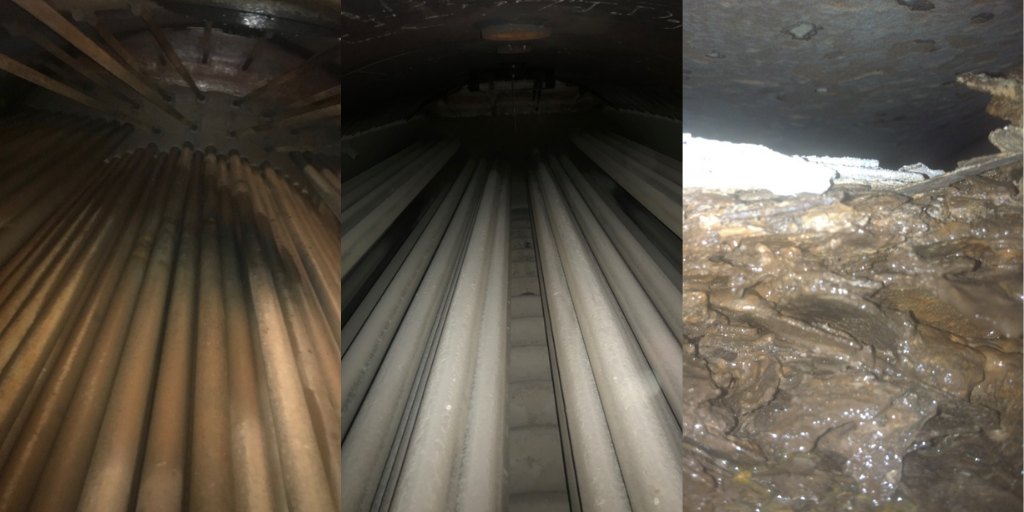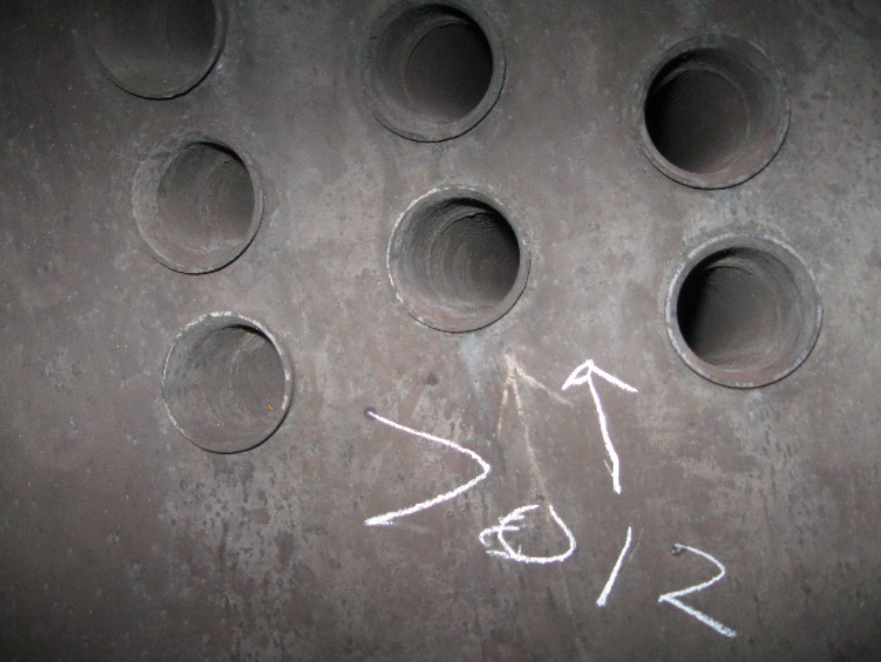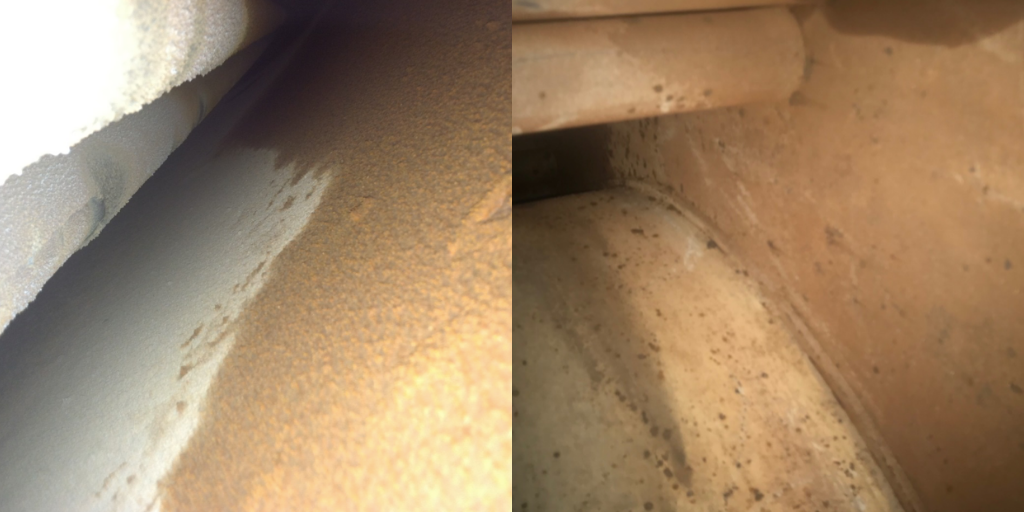
Boiler Inspection: What to Look For
Regular inspections of boilers and other pressure vessels are required by law.
Regulations vary by jurisdiction. The National Board Synopsis of Boiler and Pressure Vessel Laws, Rules and Regulations outlines these requirements by location. Click the link to access the document online and verify your local regulations.
Inspections are often performed by state inspectors or insurance representatives, who are under contract to physically inspect boilers and many other pressure vessels.
What do boiler inspectors look for?
Water Side Boiler Inspections
As water treatment experts, the portion of boiler inspection we are invested in is the water side of a boiler. Here is what to expect. Inspections include a look and/or climbing into the mud drum; sometimes Chemtex reps take photos inside the boiler and make marks showing the inspection date.
Water Tube Boiler:
Mud Drum:
- Pitting – Is there pitting in the drum? Pits often look like rusty volcanos.
- Pitting is caused by oxygen, it indicates that there is incomplete removal of oxygen, by either mechanical or chemical means.
- Sulfite can stratify in an offline boiler- even when there is a scavenger residual, it may not be evenly distributed. Warming a boiler regularly will insure the residual protects the entire boiler.
- Deposits – Is sludge or scale accumulated in the bottom of the mud drum? Are the tubes showing a buildup of minerals on them? Is scale or sludge delaminating off the tubes or is it building up?
- The flow of the boiler water goes up the risers and down the down comers. Improper water treatment may allow deposits to form.
- Low firing rates can exacerbate potential for deposition. When flow is minimal, there’s a greater likelihood for scale to bake onto the hot tubes.
- Is there a sludge collector? These can help remove sludge from the entire bottom of the mud drum.
Steam Drum: The inspector will examine and photograph the steam drum.
- Is there scale or pitting? Again, pitting on the steam separators and tubes will occur if oxygen removal is inadequate.
- Is there deposition, in the form of a concentration of minerals in the steam drum? Steam separators and surface blowdown lines should be free of deposits.
- Does the surface blowdown line collect water from more than one point?
- Is there a perforated line collecting concentrated water from just below the normal water level of the boiler? Sometimes there is a single split pipe which only pulls water from one point.
- A perforated surface blowdown line can help blowdown be more effective and proven deposition form happening in corners of a boiler.
Firetube Boiler: Proper inspection will examine and photograph tubes from the top through the manhole as well as through the hand holes in a boiler. Remember to make note of which hand hole was photographed, for future reference.
- Is there pitting on the tubes? These might be visible from the manhole on the top of the tubes or through the hand holes on the sides or bottom of the tubes.
- Pits initially look like tiny volcanoes. These indicate corrosion which is caused by oxygen in the boiler. Oxygen corrosion is the number one cause of boiler tube failure.


- The oxygen scavenger, sulfite can stratify in an offline boiler- even when you test and find it on one part of the boiler, it may not be evenly distributed. Warming a boiler regularly will insure the residual protects the entire boiler.
- Is there scale?
- Can bare metal be seen on the tubes? Can the markings on the tubes made in previous years be seen? Use a welding crayon to mark the tubes.
- Is there a pile of scale lying on the bottom of the boiler? Is old scale falling off, or is scale building up and falling off as boiler conditions change? There should be not a big pile of scale in the bottom of the boiler year after year unless there is clearly a cleanup taking place.
Deaerator: If the plant has a deaerator is should be inspected.
- Is the spray or tray section intact?
- Are pieces of the spray section lying on the bottom of the drum?
- Are trays in place and showing any signs of degradation.
- Deaerator shells are more thoroughly inspected by insurers with equipment designed to show integral failures. Critical in high pressure system inspections include pit depth surveys, ultrasonic testing of remaining shell wall thickness, and fluorescent magnetic particle testing of pressure vessel welds.
Fire Side Boiler Inspections
While this aspect of inspection is also critical, as water treatment providers we are less concerned about the fire side. However, you should be! Attend closely to your inspectors’ evaluation of this side as well.
How to Get the Most of Your Boiler Inspection
A boiler inspection is not just a regulatory requirement, it is a learning opportunity. We suggest that you take you your own photos of everything which is subject to inspection. Be present at the plant when the inspector is on site so you can get a thorough understanding of their perspective and evaluation. Keep records of your boiler’s condition over time.
Remember: Clean, scale-free boilers are more efficient boilers. Always watch for pitting: Oxygen corrosion is the number one cause of boiler tube failure, which can lead to costly downtime.
A Report Card on Boiler Condition
Boiler inspections offer an annual report card on the condition of the boiler, which reveals volumes about your water treatment program efficacy. Make these inspections count! Inspectors have a lot of experience in evaluation boilers, and their insight is valuable. Listen to their analysis while you do your own inspection.




/NQA-ISO-9001-Logo-ANAB.jpg)